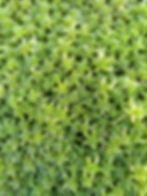Cranberries and Cottongrasses - A Day on the Bog
- Carys Mainprize
- Mar 9, 2022
- 4 min read

Since I started my role as Project Officer back in November, we’ve had a busy survey schedule at CCC. A survey day typically starts with a long car journey. At 6’427 km2 Galloway is a vast area to cover, and peatlands always tend to be in the remote and far-flung areas. The journey doesn’t always end with the drive: it is an easy survey day if roads take us all the way there. A long and steep walk in is almost inevitable!
Before setting off, decisions must be made as to the most appropriate survey attire. Wellies and waterproofs are essential, and as a rule I often wear as many layers as possible. By nature, peat bogs tend to be in the most exposed and weather-beaten locations. Never be fooled by an optimistic weather forecast - this is Scotland after all! Thick fog, blustering winds and sideways drizzle regularly combine to make a troublesome trio. It would be unfair to pretend the weather is always bad - my sunglasses have been used on more than one occasion in recent weeks!
With our first survey point loaded into our trusty GPS, we set off across the wide expanse of moor. The terrain can make or break a survey and on a peat bog it’s all about what’s going on beneath your feet. Our most essential piece of kit is a set of thin fibreglass rods that are thrust down into the catotelm, the lower peaty layer of the bog, to measure the depth of peat. Different depths are measured by the simple addition of more rods until you can’t push them down any further. Sometimes the depths of peat in Galloway are remarkable and unexpected. We are not only looking at length in terms of metres but also in terms of time. Every metre down is approximately 1,000 years old: a millennium’s worth of organic carbon storage. Pulling 7 metres of slippery, wet and gangly poles from the ground is an awkward task on a windy day, but also an incredible journey back to the fringes of the last ice age.

One sure sign that you are standing on a healthy bog is if you begin to feel like the ground is moving beneath your feet as your wellies sink into the thick, peaty water. Functioning bogs have an extremely high water content. If you jump up and down the ground wobbles like thick custard. We say the bog has a ‘good jiggle’. It is this incredible water retention that makes functioning bog ecosystems so important for flood prevention and water quality.

The species that are growing in the acrotelm, the uppermost living layer, can tell you a great deal about the state of the bog. Sphagnum mosses are the superstars of the bog, supplying the plant material which forms the peat below. These marvellous mosses can form ‘living carpets’, holding up to 20 times their weight in water long after the surrounding soil has dried out. Cottongrasses are also key peat-forming species, and in the summer months they can transform a bog with their snow-white swaying seedheads. I often keep an eye out for glistening red jewels nestled amongst the Sphagnum: these are the sour and juicy fruits of Bog Cranberry which can be found creeping across the ground.
Unfortunately, on many of the sites that we visit, the acrotelm has been damaged and degraded because of a multitude of factors including drainage, burning, trampling, and grazing. On degraded sites, non-wetland species such as Heather and dense tussock-forming species such as Purple Moor-grass are favoured, which can cause further degradation of the peat through the drying action of their root systems.


Walking across a bog with upmost care, trying your best to dodge the ankle-twisting hummocks and tussocks, you suddenly disappear up to your waist in a hidden ditch. It is the water-logging capability of peatlands which means that so many have been drained in an attempt to ‘improve’ the land. Some drains are wide, deep, and fast flowing and it has been astonishing to see how much water they can move after high rainfall events. But it’s not just water that washes away. We have watched fragments of peat (known as particulate organic carbon) flow down the drains before our very eyes. In the worst-case scenarios this erosion becomes intensified over time, leading to the highly degraded hagg and gully systems that release large quantities of carbon.
After a long day’s surveying, notebooks filled with thoughts, we scratch our heads with our cold and peat-stained hands. How did this bog end up in this condition and what techniques could we use to restore it? Trying to unravel the multitude of factors at play is often a complex exercise as each bog has its own hydrology, ecology, and land-use history. Each peatland restoration project that we design is tailored specifically each site, taking into consideration individual nuances and characteristics of the bog. I’m looking forward to more field surveys this year and getting to grips with the nitty gritty of peatland restoration!
